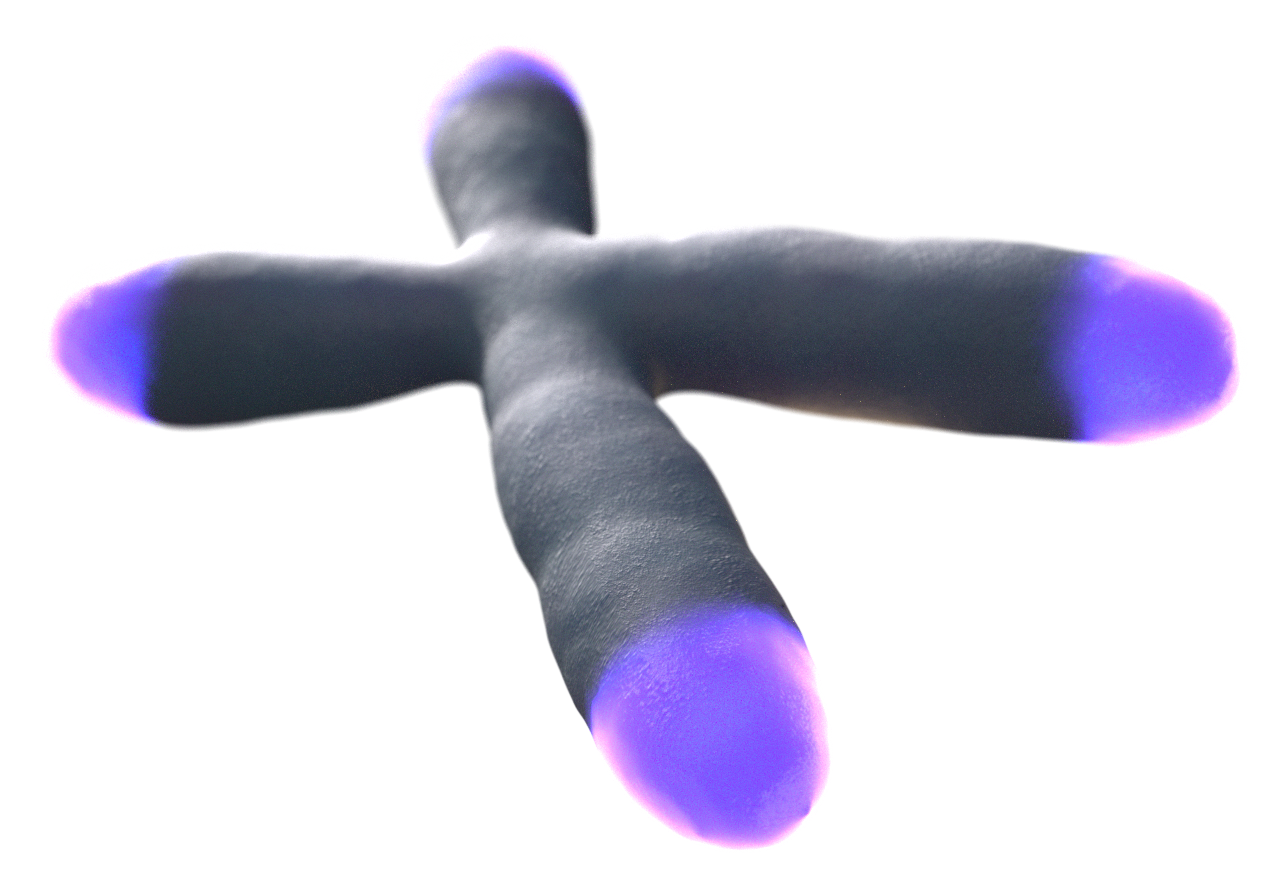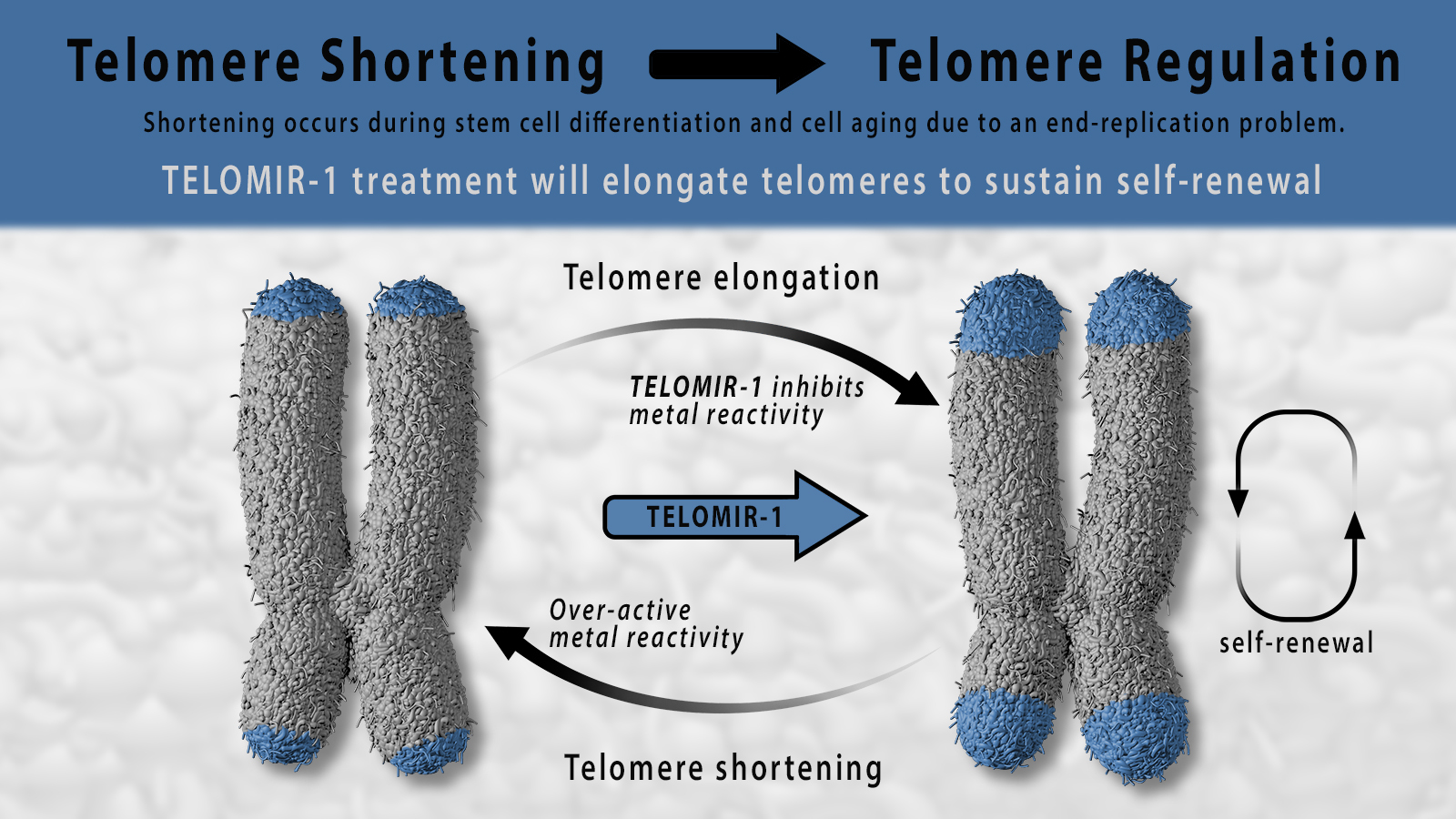what are telomeres?
Telomeres are the protective end caps of a chromosome made up of DNA sequences and proteins (TTAGGG). They are like a plastic cap at the end of a shoelace.
During cell division, telomeres allow cells to divide without losing genes by protecting the chromosome ends from becoming damaged. This damage could alter the genetic sequence and lead to cell death, certain types of cancers, and other diseases.
As we age, telomeres shorten, which increases the likelihood of DNA damage and of contracting a number of degenerative and age-related diseases.

TELOMERE REGULATION
Self-Renewal of Stem Cells

David A. Rini © Johns Hopkins University
Our overarching goal is to provide evidence that Telomir-1 can promote telomere elongation and stability, leading to a slower progression of diseases and self-renewal.
We have limited stem cells to repair ourselves due to limits on telomeres and their shortening with each replication. Longer telomeres can give us more, meaning more ability to repair and renew ourselves.
WHAT DO WE MEAN BY AGE-REVERSAL OR ANTI-AGING?
IT’S NOT THE FOUNTAIN OF YOUTH – IT’S THE SCIENCE OF TELOMERE ELONGATION
While our initial proposed clinical indications for Telomir-1 are osteoarthritis and hemochromatosis, we are also more broadly studying the effect of telomere elongating on the ability of the body to repair itself, thereby potentially mitigating effects typically associated with aging.
By “AGE” we mean an examination in our pre-clinical animal testing of demonstrable endpoints like:
- Gait strength or weakness (video study)
- Joint damage assessment
- Dynamic weight bearing (limb and tail)
- Clinical chemistry
- Hematology
- Telomere length
- Change in synovial fluids
- Fur and coat changes
- Skin, hair, and wrinkle changes
- Reduction in pain
- Behavior changes

